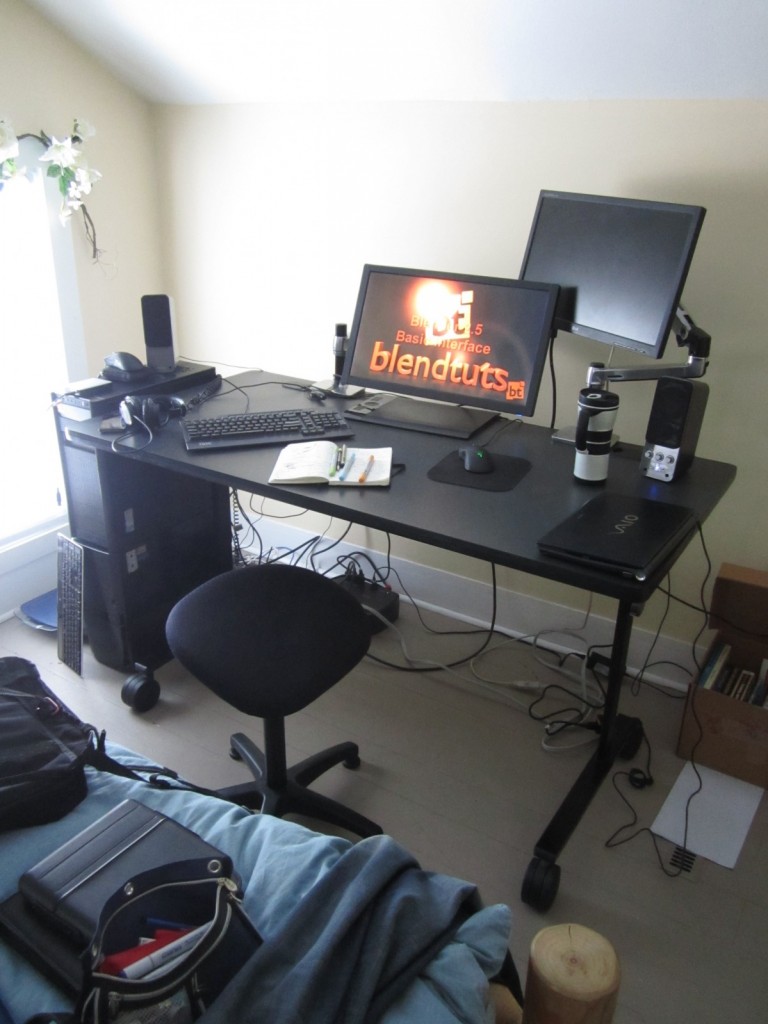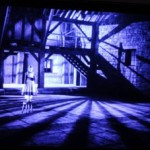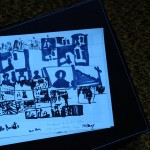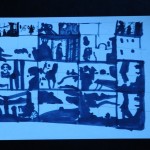Saturday I spent some time with Frank, going through some modelling basics for about 30 minutes. The more I see, the more I like in this program. I’m staying open, and learning to accept the differences, focusing on what I’ve gained.
Already, the forced workflow difference is showing benefits. Some very intuitive gems scattered all over the place. “Ahhh… freshness.”
I just watched and really liked Darrin Lile’s intro to Blender. Nice light little walk, that covers a lot of basics in only 10 minutes. His narration is super-clear.
Today, I was learning camera navigation and was very impressed by all the options in which one can setup their cameras. Pressing alt+b, then dragging a selection box over the viewport, in order to determine what objects are visible… is odd and beautiful.





